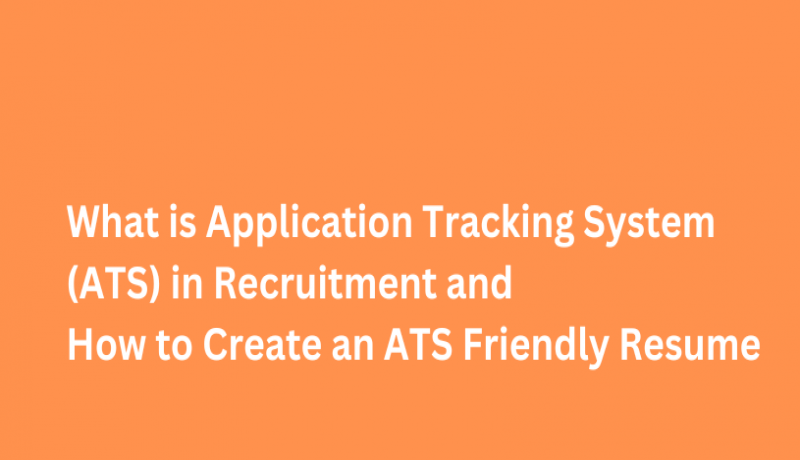What is Application Tracking System (ATS) in Recruitment and How to Create an ATS Friendly Resume
An Application Tracking System (ATS) in recruitment is a software application designed to streamline the hiring process for organizations.
Organizations of all size use ATS to manage their recruitment efforts.It serves as a centralized platform to manage and automate various aspects of the recruitment and hiring workflow.
The primary function of an ATS is to help recruiters and hiring managers track, organize, and manage job applications in a more efficient and organized manner.
Key features of an ATS typically include:
Resume Parsing: ATS can automatically extract and parse relevant information from resumes, such as contact details, work experience, education, and skills. This helps in creating a standardized and searchable database of candidate information.
Job Posting: The system allows recruiters to post job openings on various job boards, company websites, and other platforms directly from the ATS.
Application Management: ATS organizes and stores all candidate applications in a centralized database, making it easy for recruiters to review, search, and manage applicants.
Candidate Communication: ATS often includes communication tools, such as email templates and notifications, to facilitate communication with candidates throughout the recruitment process.
Workflow Automation: ATS automates various recruitment processes, such as sending automated responses to applicants, scheduling interviews, and managing the overall hiring workflow.
Collaboration Tools: ATS enables collaboration among team members involved in the hiring process. Multiple users can access and review candidate profiles, leave comments, and share feedback within the system.
Reporting and Analytics: ATS provides reporting and analytics features, allowing recruiters to track key metrics, monitor the effectiveness of recruitment strategies, and generate reports for management.
Integration with Other Tools: Many ATS platforms can integrate with other HR and recruitment tools, such as payroll systems, background check services, and HRIS (Human Resources Information System).
The use of an ATS can significantly enhance the efficiency of the recruitment process by reducing manual tasks, improving collaboration, and helping organizations find and hire the most qualified candidates for their job openings.
Creating a resume that is optimized for an Application Tracking System (ATS) involves following certain guidelines to ensure that the system can accurately parse and understand the information on your resume.
Here are some tips to help you create an ATS-friendly resume:
Use a Simple and Standard Format:
Stick to a clean and simple resume format with standard fonts (e.g., Arial, Calibri, Times New Roman) and consistent formatting.
Avoid using elaborate designs, images, or graphics, as they may not be recognized by the ATS.
Include Relevant Keywords:
Use industry-specific keywords and phrases related to the job you're applying for. These keywords should reflect the skills, qualifications, and experience mentioned in the job description.
Tailor your resume for each job application by incorporating the keywords used in the job posting.
Use Standard Section Headings:
Organize your resume with standard headings such as "Summary," "Work Experience," "Education," and "Skills." This helps the ATS to identify and categorize the different sections accurately.
Avoid Headers and Footers:
Some ATS may have difficulty reading information in headers and footers. Place your important contact information (name, phone number, email) directly in the body of the resume.
Include a Skills Section:
Create a dedicated section for your key skills. Use a bulleted list to highlight relevant skills and competencies. Again, incorporate keywords that align with the job requirements.
Use Simple Bullet Points:
Use standard bullet points to list your achievements, responsibilities, and accomplishments in your work experience. Avoid using special characters or symbols.
Quantify Achievements:
Whenever possible, quantify your achievements and provide measurable results. This helps the ATS and hiring managers understand the impact of your contributions.
Include Relevant Certifications:
If you have industry-specific certifications or relevant training, include them in a separate section. This can enhance your profile and improve keyword matching.
Save in a Compatible Format:
Save your resume in a common, ATS-friendly format such as .docx or .pdf. However, be cautious with PDFs, as some older ATS may struggle to parse text from PDF files.
Proofread Carefully:
Ensure there are no spelling or grammatical errors in your resume. An error-free document is essential for making a positive impression with both ATS and human reviewers.
By following these tips, you can increase the likelihood that your resume will be successfully parsed by an ATS, helping you get noticed by recruiters and hiring managers in the initial stages of the application process.






